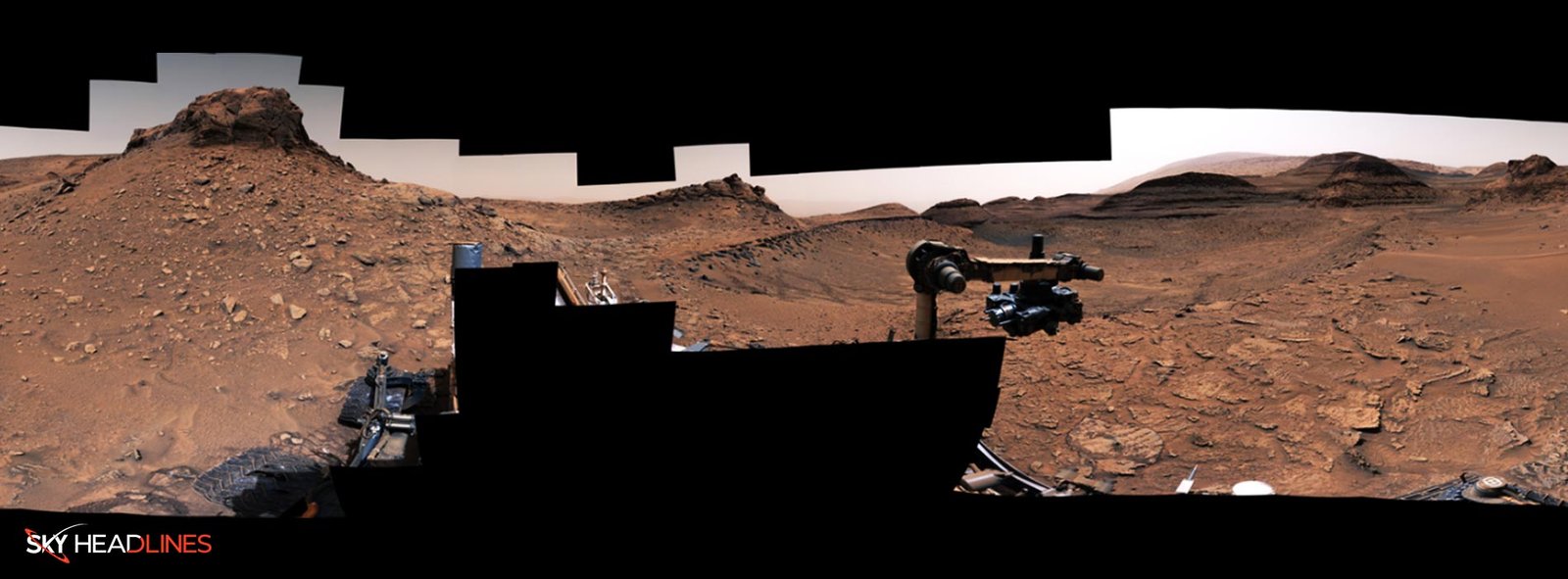Spotting rippled rock textures on Mars means something big! There is a possibility that lakes do exist in an area of ancient Mars. Scientists thought there might not be any lakes on Mars left with water. But with this mission, the research team was able to discover Mars’ watery past clues. The research team thought they’d seen the last evidence of lakes covering this region of Mars when NASA’s Curiosity rover reached the “sulfate-bearing unit” last fall. This is due to the fact that the rock layers here formed in drier environments than the regions known earlier in the mission. Sulfates, or salty minerals, are thought to have been left behind when the area’s water dried to a trickle.

When Curiosity’s team found the mission’s most evident proof then they were taken aback. Ancient water ripples formed within lakes on the surface of a shallow lake stirred up residue billions of years ago.
“Ashwin Vasavada” is Curiosity’s project scientist at NASA’s Jet Propulsion Laboratory in Southern California. He says, “This is the best evidence of water and waves that we’ve seen in the entire mission,”. Moreover, he says: “We climbed through thousands of feet of lake deposits and never saw evidence like this – and now we found it in a place we expected to be dry.”
Layers of History!
Curiosity has been climbing the 3-mile-high (5-kilometer-high) mountain since 2014. Mount Sharp was once polluted with lakes and streams that would have provided a rich environment for microbial life if any ever existed on Mars.

In Mount Sharp, the oldest layers are at the bottom and the youngest layers are at the top. The Curiosity Rover continues to climb up and moves along a Martian timeline. This is allowing scientists to study how Mars evolved from a more Earth-like planet. With a warmer climate and abundant water in its ancient past to the freezing desert it is today.
In search of Mars’ watery past, Curiosity found these rock textures kept nearly a half-mile above the mountain’s base in what’s known as the “Marker Band”. It is a thin layer of dark rock that stands out from the rest of Mount Sharp. Despite several attempts, Curiosity has not been able to drill a sample from this rock layer. Curiosity had to try three times before finding a soft enough spot to drill on “Vera Rubin Ridge” lower down the mountain.
In the coming week, scientists will be looking for softer rock. Even if they have yet to get a sample from this unusual strip of rock, they have other locations in mind.
Martian Clues Curiosity Rover!
Scientists can see another clue to the history of Mars’ ancient water in a valley called Gediz Vallis, which is far ahead of the Marker Band. The valley was carved by wind, but a channel runs through it. And begins higher up on Mount Sharp is thought to have been eroded by a small river. Scientists believe wet landslides occurred here as well, sending car-sized boulders and debris to the valley floor.
It’s obvious that the debris pile at the top of Mount Sharp is one of the more recent features. This is because it rests on top of all the other layers in the valley. Last year, Curiosity saw this debris twice at Gediz Vallis Ridge. However, it could only observe it distantly. Later this year, the Curiosity Rover team hopes to have another opportunity to see it.
The Marker band has captured the team’s interest in a peculiar rock texture. This was probably brought on by some kind of cyclical pattern in the climate or weather, like dust storms. Rocks with layers that are uniform in their thickness and spacing are nearby the rippling textures. This type of rhythmic pattern in Earth’s rock layers frequently results from atmospheric phenomena that take place at regular intervals. It’s conceivable that similar processes led to the rhythmic patterns in these Martian rocks, suggesting that the planet’s ancient temperature may have changed.
The Curiosity’s project scientist Ashwin Vasavada says: “The wave ripples, debris flows, and rhythmic layers all tell us that the story of wet-to-dry on Mars wasn’t simple,” Moreover, he says about Mars’ watery past. “Mars’ ancient climate had a wonderful complexity to it, much like Earth’s.”





